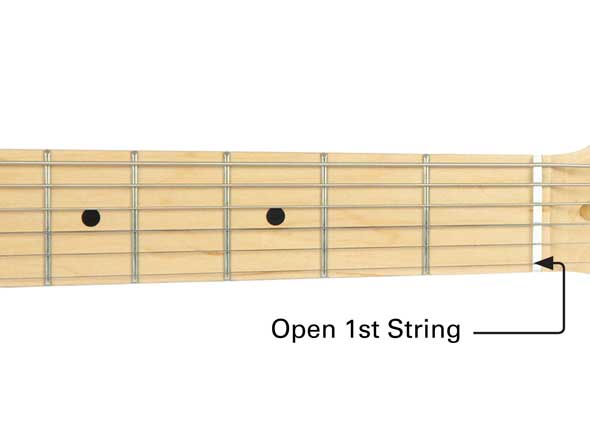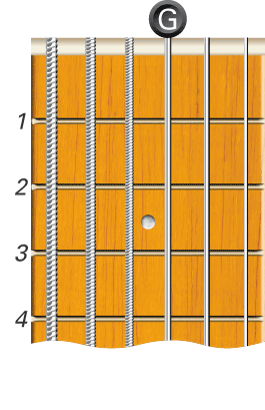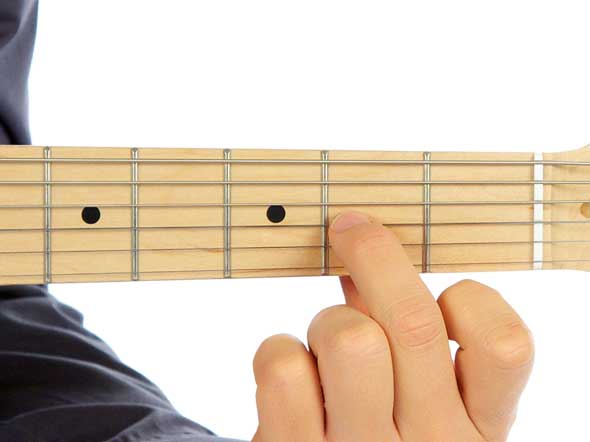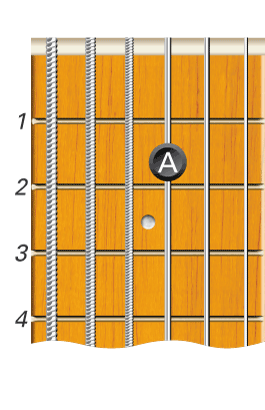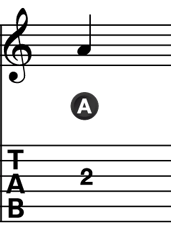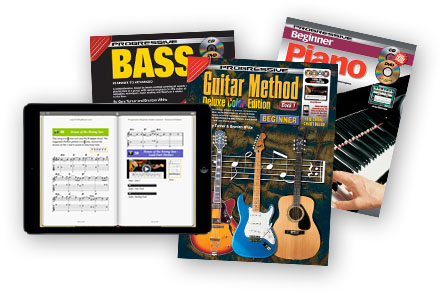<< First < Previous | Intro 1 2 3 4 5 | Next > Last >>
Back to Table of Contents
Before commencing each lesson or practice session, make sure that your guitar is in tune. See Tuning Your Guitar to learn how to tune.
The Major Chord
A chord is a group of three or more notes that are played together. Chords are used to accompany a singer, or an instrumentalist who is playing the melody of a song. Major chords are the most common chords.
The first chord learned is the G major chord, usually just called the G chord. The G major chord is indicated by the letter G. This is called the chord symbol. Chords are learned with the help of a chord diagram. (See Chord Diagrams)
To play the G chord, play all six strings with the pick at the same time using a downward motion. This is called a strum. Hold the pick lightly and strum from the wrist. Keep your wrist relaxed.
If any notes buzz or sound muffled, you may have to press harder. Make sure your fingers are just behind the fret.
| 1 |
Video
The Seventh Chord
Another type of common chord is called the “dominant seventh” chord. It is usually referred to as the “seventh” chord. The chord symbol for the seventh chord is the number 7 written after the alphabetical letter. The symbol for a D seventh chord is D7.
Slide Finger
The following example contains the G and D7 chords. When changing from G to D7, do not lift your third finger off the string, but slide it down to the second fret. Only touch the string very lightly as you do this. When changing from D7to G, slide your third finger up to the third fret.
| 2 | Changing from G to D7 |
Video
These chord exercises are called chord progressions. Practice slowly and evenly and count or tap your foot as you play to help you keep time. There are four strums in each bar.
Troubleshooting
- When strumming, only your wrist should move. Do not move your arm and keep your forearm resting on the upper edge of the guitar.
- Remember to keep your left hand fingers just behind the fret. If you place it on top of the fret, the note will sound deadened. If you place it too far back from the fret the note will buzz and you will have to press down too hard to prevent it.
- If you have an acoustic guitar, pick the string over the sound hole as this results in the best sound.
Notes on the 3rd String
| 3 |
The following chord progression contains two bars of the note G followed by two bars of the note A. There are four quarter notes in each bar. Remember that you can choose to read the traditional music notation (top line of music), or the tablature (second line). To make the example sound finished, end with one strum of the first chord, a G chord.
| 3 | (Lead Part Notes) |
Video
| 3 | (Rhythm Part Chords) |
Video
<< First < Previous | Intro 1 2 3 4 5 | Next > Last >>
Back to Table of Contents




















